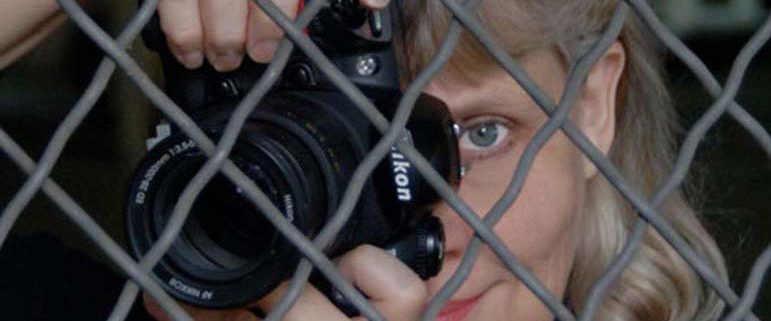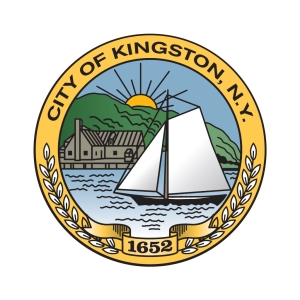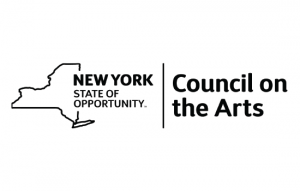Deborah Mills Thackrey: Seeking Photographic Abstractions
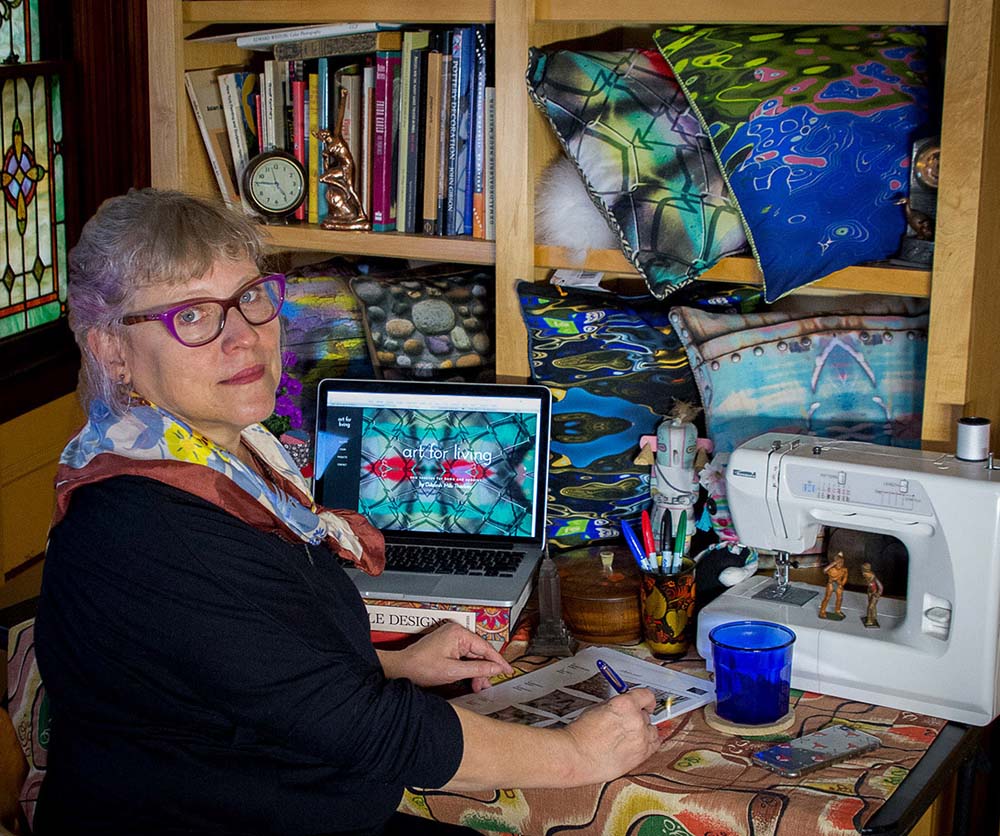 When did you first know you were an artist?
When did you first know you were an artist?
My mother learned when I was small that if she stuck a piece of paper and a pencil in my hand she could keep me quiet and occupied.
Favorite medium(s) you use to make art…
Photography and recently printing my images on fabric.
What are the most interesting new trends in your field?
Digital textile printing has improved incredibly.
Talk about your creative process – where/when do you get most of your ideas and how do you know a piece is ‘finished’?
Everywhere I go I find amazing things to shoot. My main focus is on abstractions but I love doing street photography. Sometimes just getting lost and wandering I feel like my muse leads me to wonderful finds. I don’t do a massive amount of digital manipulation, not much more than I would have done in the darkroom, contrast and color adjustments. People think that just clicking a shutter and my work is done but I spend hours sorting and culling, cropping, and proof printing, and just plain staring at a piece until it speaks to me. Photography is front-end loaded, meaning that capturing that “decisive moment” is most important.
Do you also teach or are you strictly a creative artist? Who was your most influential mentor and why? How do you see the role of being a mentor? and why?
I haven’t taught but I mentored other artists by opening a gallery in California and giving several artists the exposure they had never received. I was able to give one of my favorite older artists a solo show that reignited his career. It was very gratifying to see them go through the process.
I am mostly self-taught. I took lots of art classes but spending a whole semester in the darkroom alone, being the only photographer in high school Journalism class, gave me the opportunity to explore. I could also check out a decent camera to use. I was inspired by the powerful photojournalism I grew up seeing of the Vietnam War and the Civil Rights protests. I miss the darkroom, but not the chemicals. And going digital means I have been able to be really prolific. I had several art teachers in the five different state and community colleges that I attended who gave me encouragement. It took me a long time to find myself and develop confidence. It has made me eager to encourage young artists to take the leap.
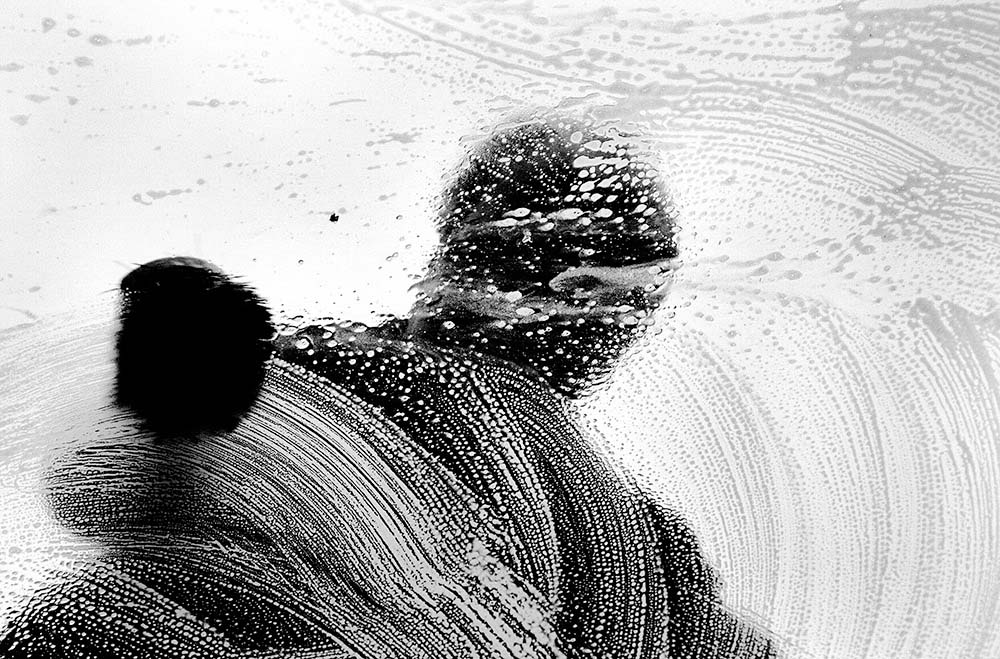 I was in my 40s when I finally realized that instead of art directing photography, I wanted to be the one shooting. It had given me years of experience selecting the right photographer for the shoot and time spent cropping, editing and storytelling with images. My new husband took a workshop at Edward Weston’s historic home by the ocean in Carmel, CA. While Tom was shooting models in the workshop conducted by Weston’s son, Cole, and his grandson, Kim, I looked up to see Kim on the roof hosing off the skylights that are the only source of lighting he uses. I took a quick series of shots of his silhouette surrounded and distorted by waves of water and suds, which, in black and white, ended up being a large part of my first solo show and set me off in the hunt for photographic abstraction. Abstract painters like Pollock, Klee, Kandinsky and Rothko were always an inspiration. I am just using photography as my media instead of paints: I can get lost in the rust, graffiti and accidental paint on the side of a dumpster and find a beautiful image.
I was in my 40s when I finally realized that instead of art directing photography, I wanted to be the one shooting. It had given me years of experience selecting the right photographer for the shoot and time spent cropping, editing and storytelling with images. My new husband took a workshop at Edward Weston’s historic home by the ocean in Carmel, CA. While Tom was shooting models in the workshop conducted by Weston’s son, Cole, and his grandson, Kim, I looked up to see Kim on the roof hosing off the skylights that are the only source of lighting he uses. I took a quick series of shots of his silhouette surrounded and distorted by waves of water and suds, which, in black and white, ended up being a large part of my first solo show and set me off in the hunt for photographic abstraction. Abstract painters like Pollock, Klee, Kandinsky and Rothko were always an inspiration. I am just using photography as my media instead of paints: I can get lost in the rust, graffiti and accidental paint on the side of a dumpster and find a beautiful image.
My gallery experience gave me a philosophic attitude that one has to do the art they are inspired to for its own reward. Showing and selling are tricky and frustrating for the vast majority of us.
What are you working on now?
The last couple of years I’ve been experimenting with combining my imagery with textiles (which has always been another love). I am starting to refurbish antique chairs using chalk paint and my crazy bright bold prints. It has been very satisfying. I still show my straight photography in galleries but is rewarding to find some other avenues for exposure.
How has being in Kingston enhanced/inspired your work? What do you like best about living in Kingston/being involved with MAD? How long have you been here?
Five years ago we moved to Kingston from the San Francisco Bay Area. Several years ago I took a Business of Art class from a New York and SoCal gallerist, Sylvia White. I asked her if living near the art market you want to be in is important and she said yes. We were getting priced out of California and discovered Kingston and it is perfectly situated so you can pop down to NYC easily and not have to live right in the hustle and bustle. I love the peace and quiet here and the access to the Hudson River and the Catskills, plus it is brimming with great architecture and history. I feel like I’ve moved from suburbia to a town in France.
I was a fairly early volunteer for MAD and several other arts-related organizations and it’s been an incredible way to meet other artists and become a part of the community. I love doing anything that encourages people to explore their creativity because it was such a long road for me. And I am happier than I have ever been.
Art and artists are valued here. At parties in CA I always felt like I had to explain that yes, I am a full-time artist and apologize for it. Like I was crazy, lazy or spoiled, and it must just be a hobby, “No… what do you really do?” I had spent a great deal of my career as a commercial artist in order to support myself. I worked at Apple in the early days of the Mac and desktop publishing, which was a blessing because I got immersed in technology from the early days—otherwise I would be basically a Luddite. Now so much of my work is on the computer that it is really a delight for me to get paint on my hands!
Deborah Mills Thackrey
Art for Living
50 Spring St.
Kingston, NY 12401
by appointment
(408) 623-9888
deborah@art-for-living.com
Art-for-Living.com
DeborahMillsThackrey.com
Click any photo to start a slide show.

